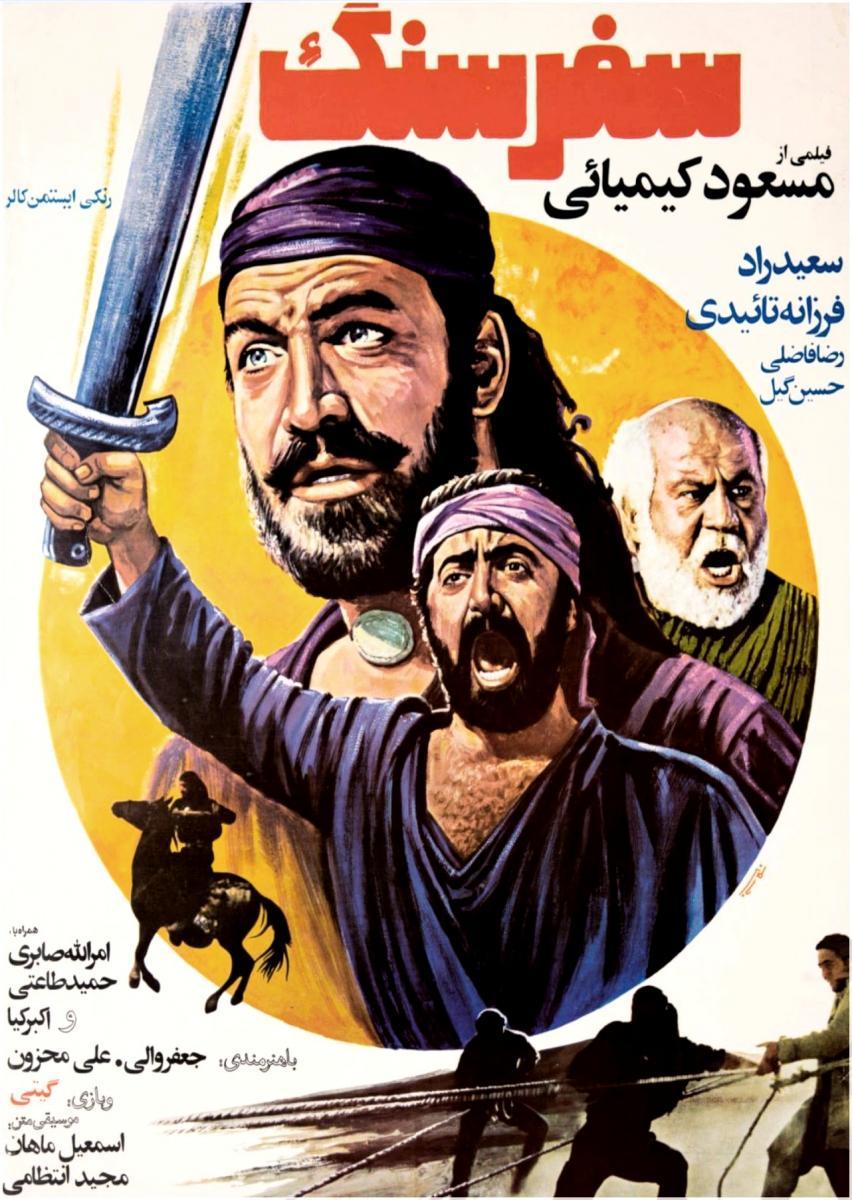The Journey of the Stone

In the run-up to the Revolution, [Masud] Kimiai had made the film Safar-e Sang (Journey of the Stone, 1977), an accurate echo of the times. The story focused on a group of farmers who decide to stand up to their tyrannical landlord by rolling a gigantic stone from the top of a mountain with the intention of smashing his exploitative mills and production facilities to smithereens. The journey is arduous but the collective will overwhelms all obstacles... This film, however, should not be misinterpreted as simply representing a rural act of defiance against the city. Journey of the Stone was a political depiction of a future society and a warning to audiences that passive consumption was no longer an option. The film may seem dated by today's standards but its real value lay in capturing the mood of the times and in expanding on the personal vendettas depicted in earlier films to include collective acts of revolt. By portraying the arousal of a sleepy community, it suggested the larger awakening of society in the struggle for freedom. A prayer scene, a 'chest-beating' ceremony and the unsheathed sword adorning the background of the ritual represented a direct call for the synthesis of religious ardor with armed struggle. The text and subtexts of Journey of the Stone thus came to represent in microcosm the wider societal conflict between the people and the regime.